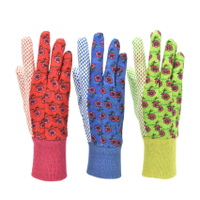7 best plants that will thrive in your kitchen
Here are the ideal houseplants to live in your kitchen
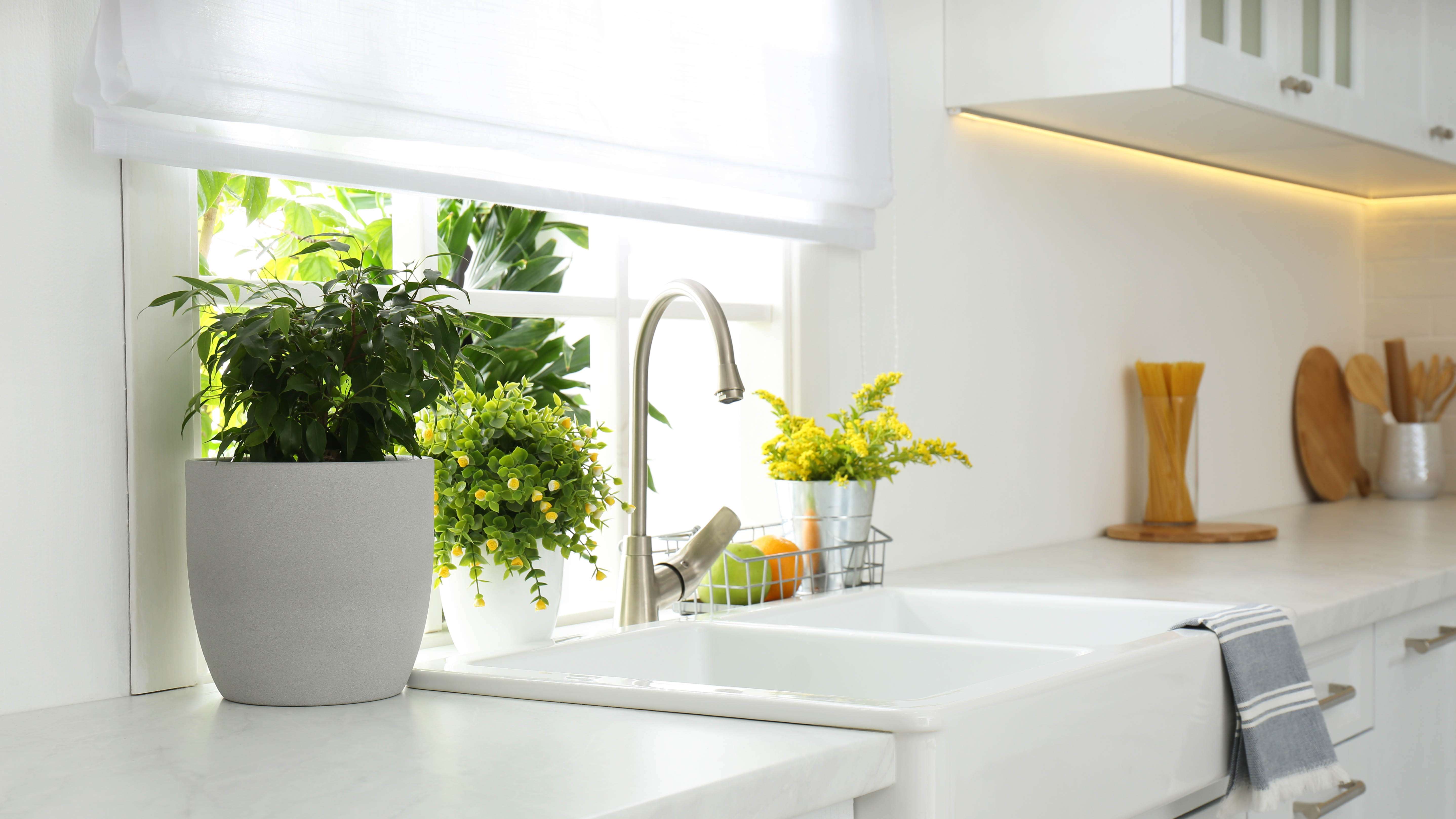
Houseplants are a great way to add a splash of color to your kitchen, and bring the outdoors in. But, not all houseplants are made to thrive in this favorite space.
Kitchens tend to have high humidity, fluctuating temperatures or poor natural light conditions — all of which can affect plant growth. This is especially the case if you’re always cooking up a storm, and there is plenty of steam in the air. What’s more, high humidity levels can prevent moisture from evaporating properly, leading to root rot in plants, which might cause it to wilt or die.
Before it gets to the stage of saving a dying plant before it's too late, there are certain types of plants more suited to survive in such tricky conditions. Similar to these 7 plants that will thrive in your bathroom, these are types that often originate from tropical climates or damp woodlands, where water is abundant, and skies are overcast or low light.
So if you want to decorate your space with plants, be sure to opt for one of these best plants that will thrive in your kitchen.
1. Snake plant
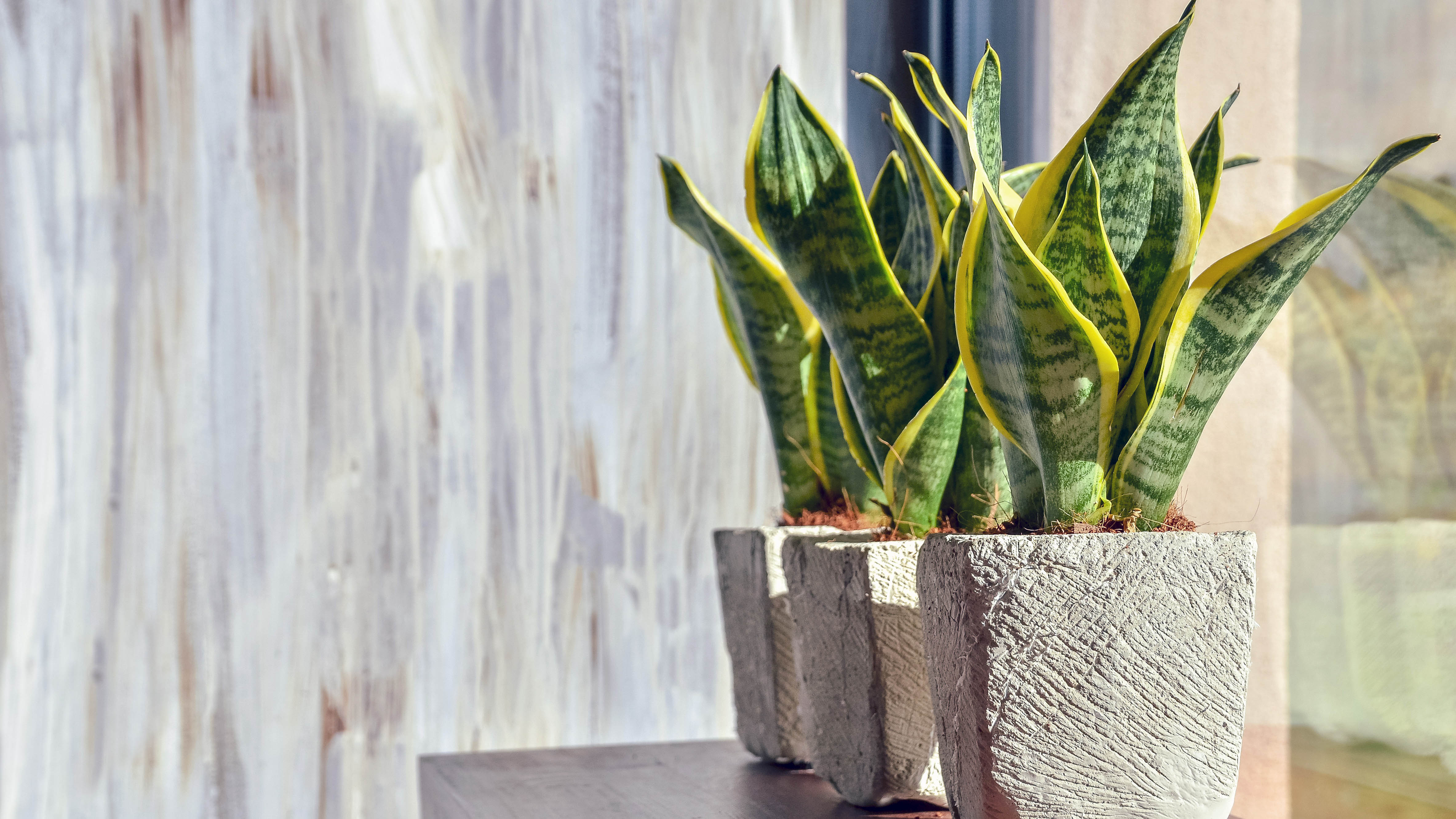
Snake plants (Sansevieria trifasciata), also known as 'mother-in-law’s tongue’, are a popular houseplant for kitchens, and are generally low maintenance. These only need watering every two weeks, but are hardy enough to go for weeks without watering.
What’s more, snake plants are known for removing excess moisture in the air, and harmful airborne chemicals — making them ideal for high humidity in kitchens. In fact, snake plants can help to reduce mold in your home, and are one of a few plants that continue to produce oxygen in low light conditions.
Snake plants are also drought-tolerant, and thrive well in bright light and warm temperatures — just avoid direct sunlight.
Sign up to get the BEST of Tom's Guide direct to your inbox.
Get instant access to breaking news, the hottest reviews, great deals and helpful tips.
G & F 1852-3 Women Soft Jersey Garden Gloves: $11 @ Amazon
Combining practicality with pretty, we recommend these women's gardening gloves for an affordable, but dependable accessory. They ranked as the best gloves for small hands in our best gardening gloves test. We found them to be both comfortable and soft, with good dexterity. Plus, you get three colors in a pack which is amazing value for money.
2. Aloe Vera
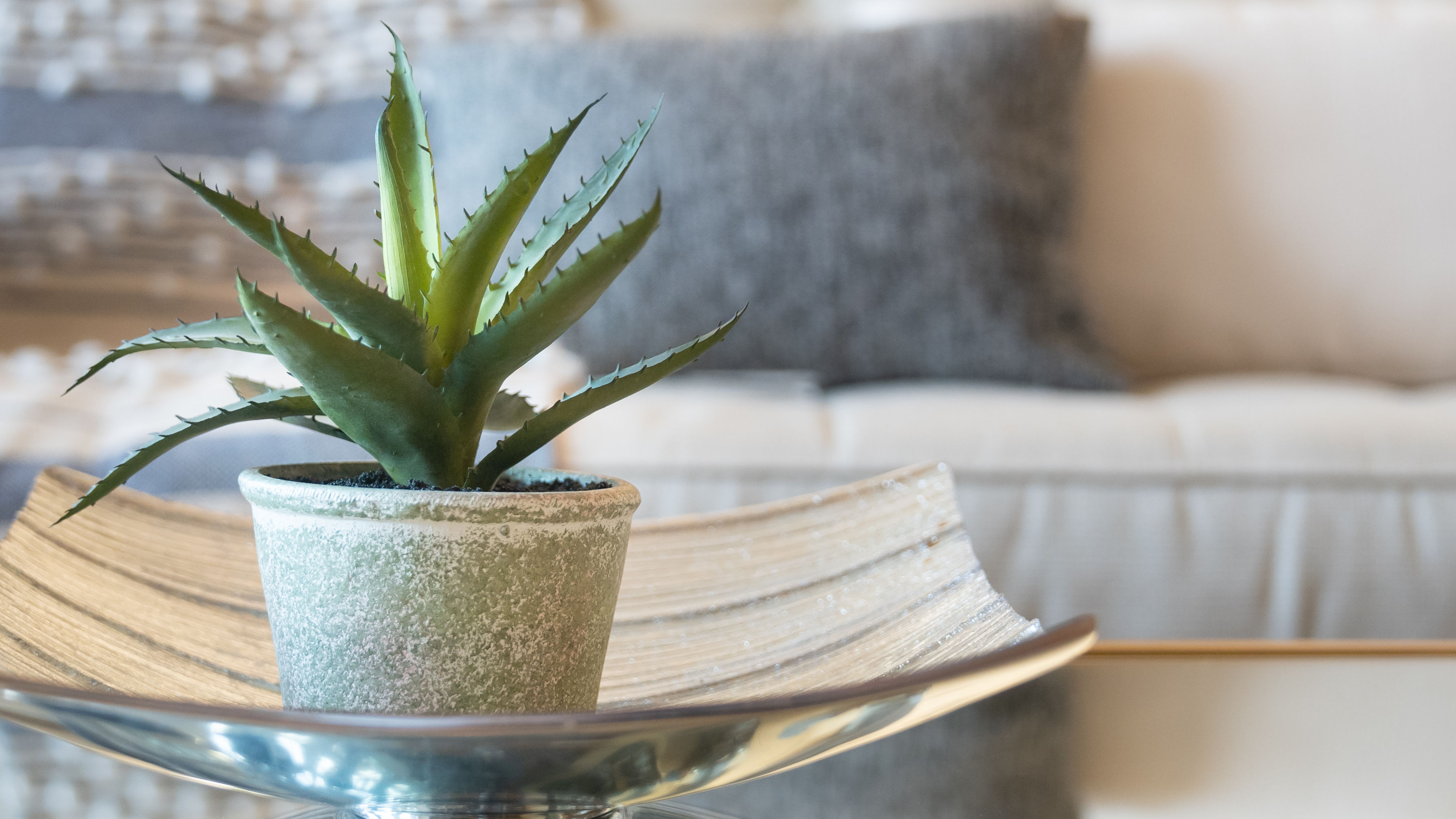
It’s relatively easy to care for aloe plants, and these are known to thrive in humid conditions and sunlight. With their distinct leaves, aloe vera are hardy, and need very little water — making these the ideal plants for kitchens.
Like most houseplants, aloe vera grows well at regular room temperature, but it won’t cope with extreme temperatures. Be sure to keep them away from open windows and doors to shield them from cold draughts. Although their leaves can grow in abundance, avoid heavily pruning your aloe plants, and only do so if the leaves are shrivelled and dead.
3. Succulents
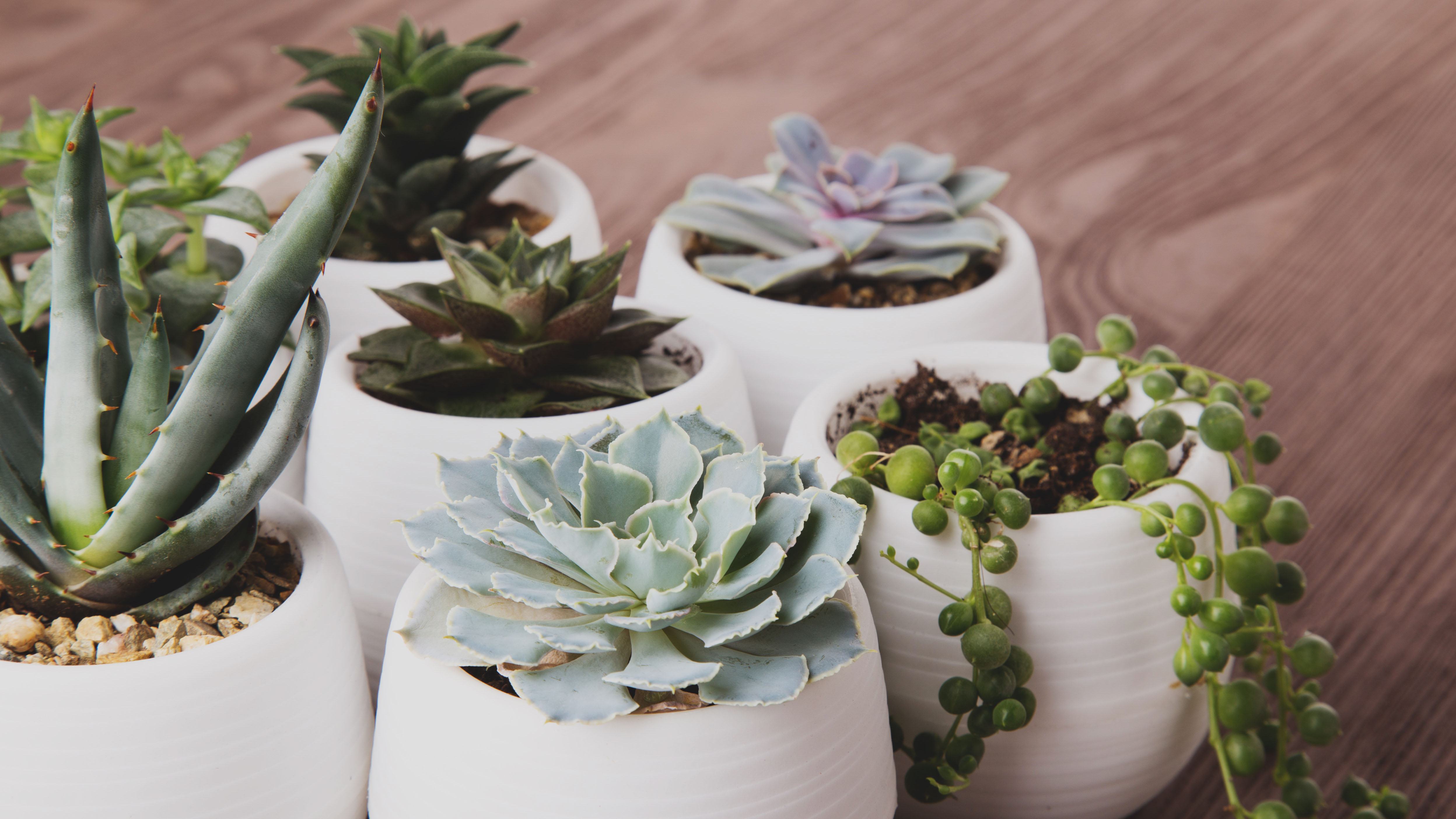
Not only can succulents make eye-catching features for any kitchen, but can cope well with tricky conditions. These hardy houseplants can thrive in bright, indirect sunlight and require very little watering.
In addition, succulents will naturally need more water in the summer, so watering in the summer once a week is good practice, while colder months will require as little as once a month. Generally, succulents are easy to care for, just ensure you use pots with drainage holes to prevent overwatering, and you can re-use any excess in the tray on other succulents.
If you’re starting a succulent garden in your kitchen, check out our guide on how to care for succulents, and how to repot succulents. Just beware of these 7 mistakes to avoid when growing succulents.
4. Herbs
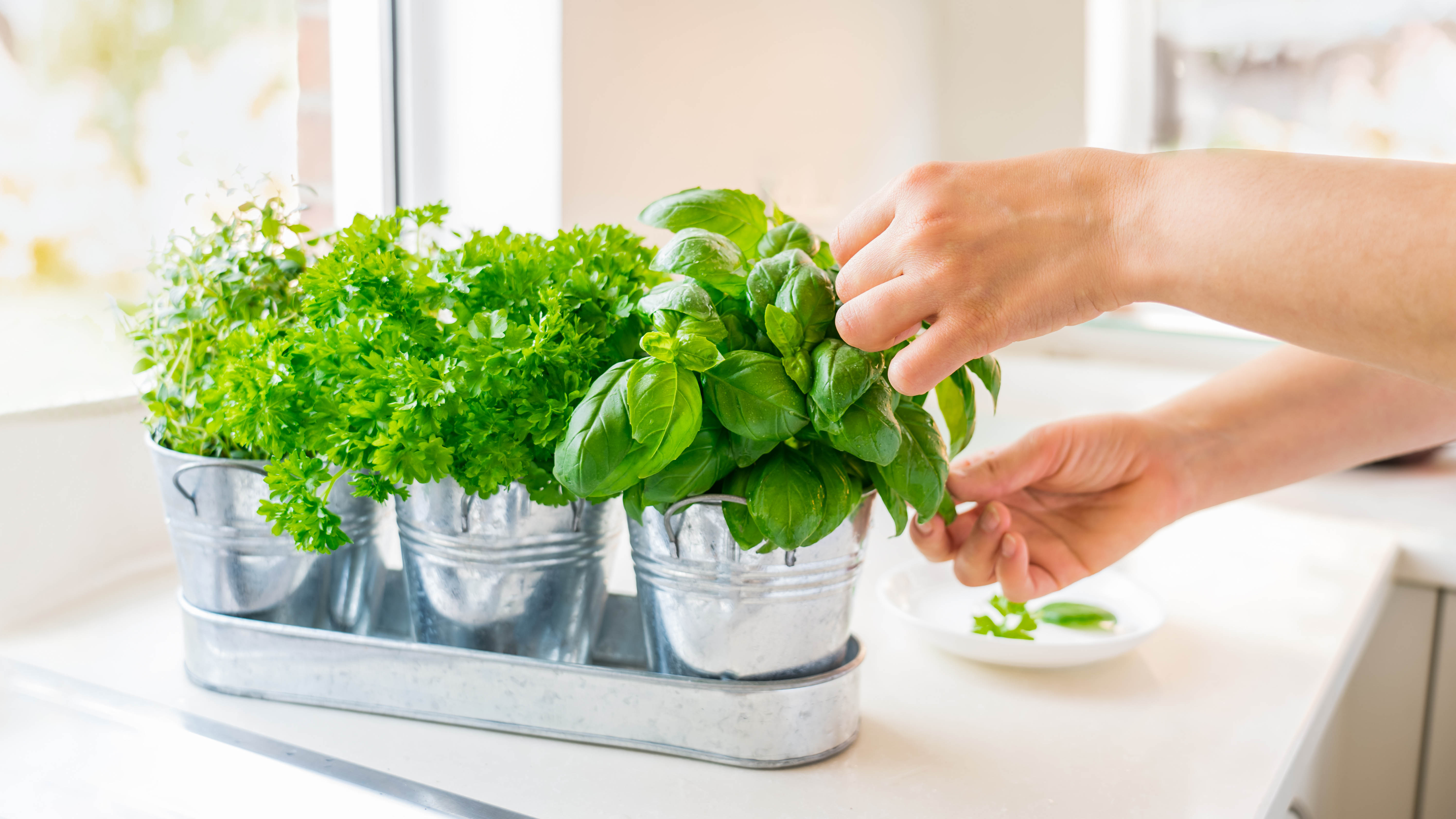
If you’ve always wanted to grow fresh herbs indoors, you’ll be glad to know that the kitchen is the ideal place for them. First of all, you’ll need to research/pick the best herbs, as not all herbs are low-maintenance or give the same results. It’s best to start with only a few types to begin with — basil, chives, parsley, oregano, rosemary and thyme are known for being the easiest herbs to grow indoors.
Generally, herbs thrive in plenty of sunlight, and in temperatures of at least 65 to 75°F, so would do well placed on a sunny, south-facing windowsill. In addition, herbs only need watering once or twice a week, although this depends on the variety, or during warmer temperatures, when it requires more.
Best of all, herbs can conveniently be plucked from your windowsill, straight into those delicious dishes all-year-round.
5. Spider plant
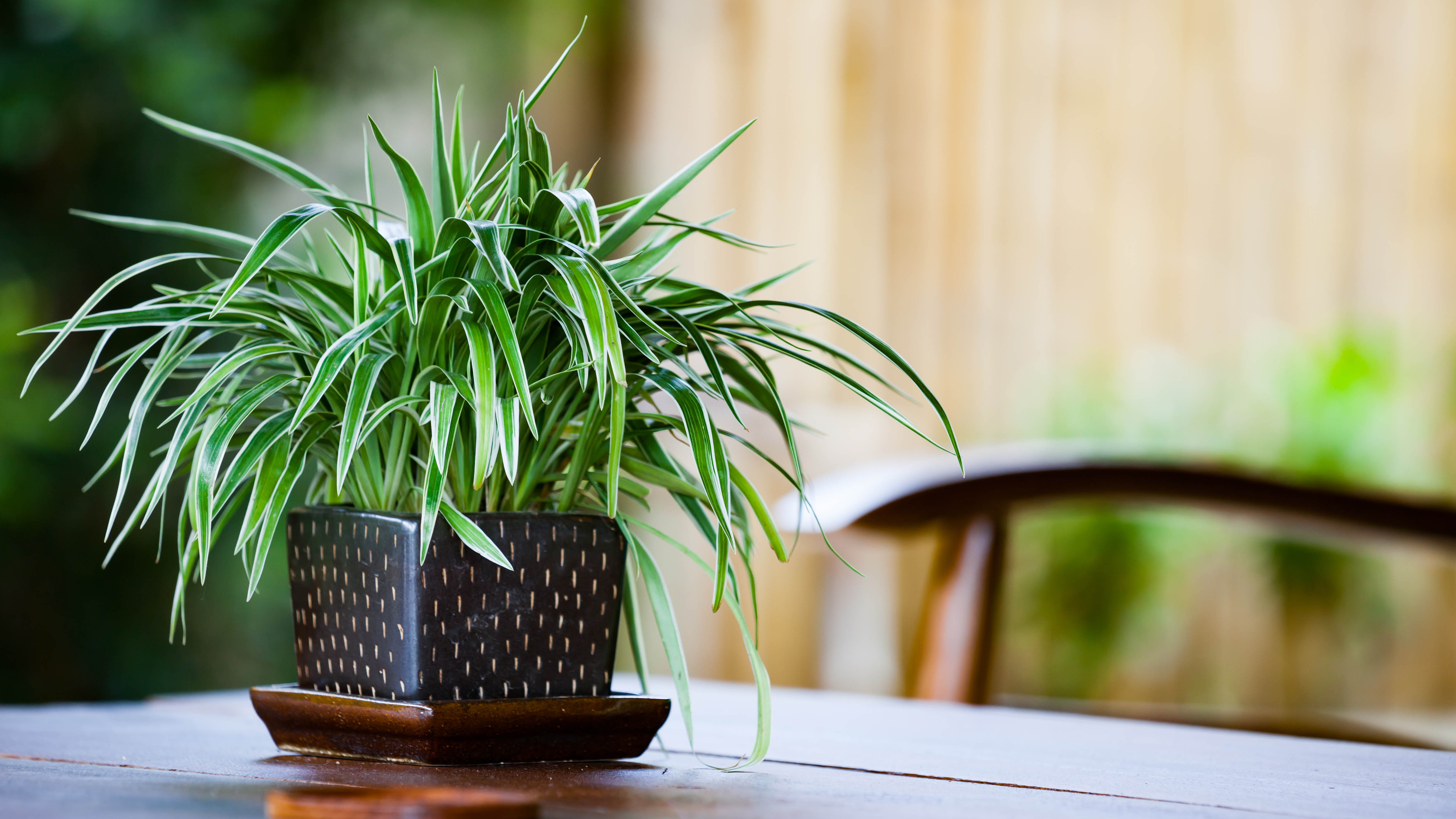
Spider plants tend to do well in bright, indirect sunlight, so are best placed on or near a sunny window in the kitchen.
These easy-going houseplants are very adaptable, easy to grow, and are also a shade-loving plant, surviving in low light. Bear in mind, the growth won’t be as lush as when they’re out in the sun. Typically, spider plants need watering or misting only once a week, but always check the moisture level of the soil with a finger beforehand. If the soil feels moist, hold off on watering for a day or two.
For more top care tips, be sure to read our guide on how to care for spider plants
6. Pothos
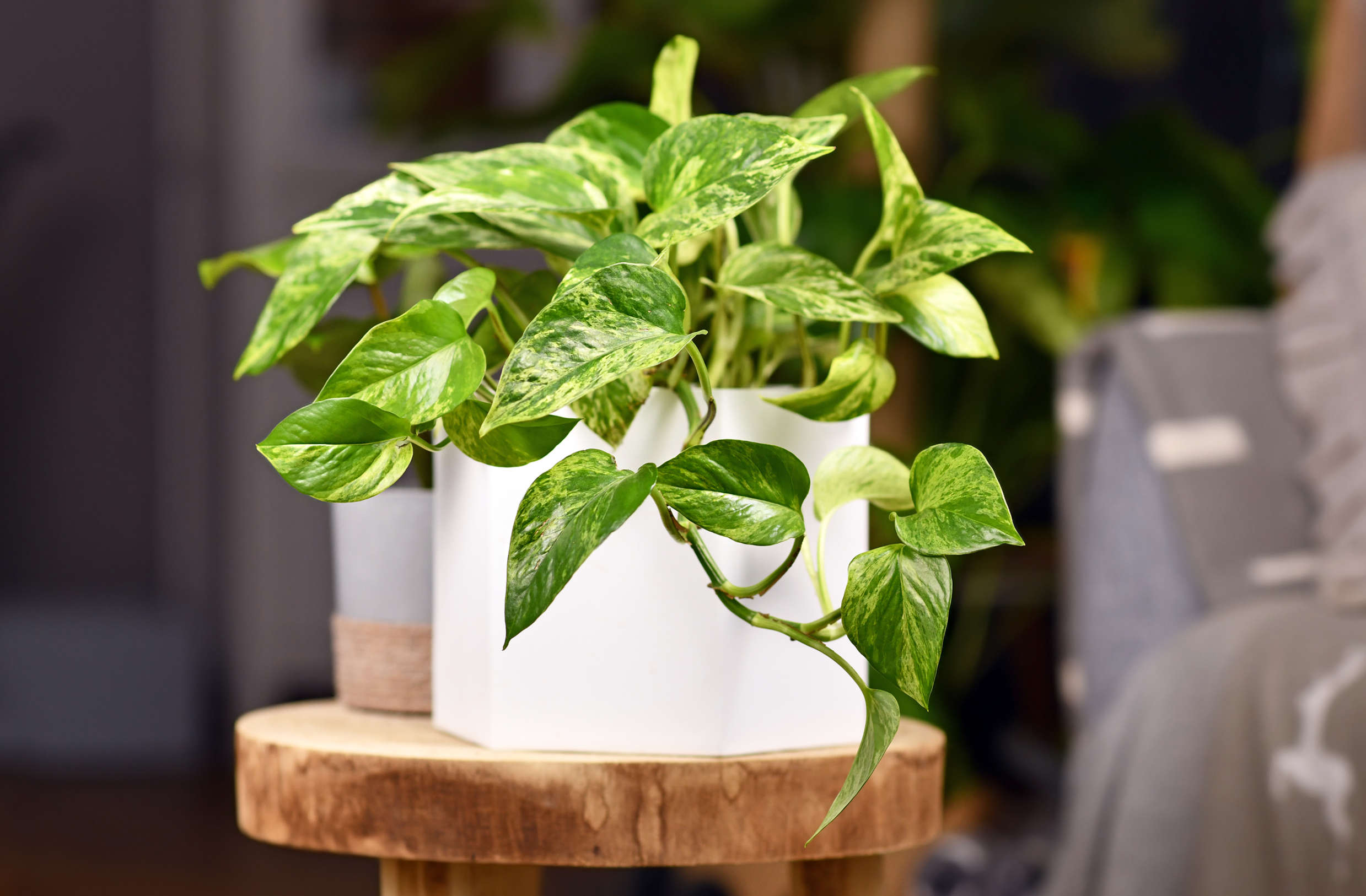
With their trailing vines, and large, glossy leaves, Pothos plants can make an attractive addition to any kitchen. This is especially the case once the vines grow longer, and you can either wrap them manually around a support, or guide the vines across a wall.
These houseplants easily absorb water, which makes them ideal for kitchens that have a lot of moisture. Generally, low maintenance, these tend to thrive in direct sunlight, but will also cope well in indirect light.
7. ZZ plant
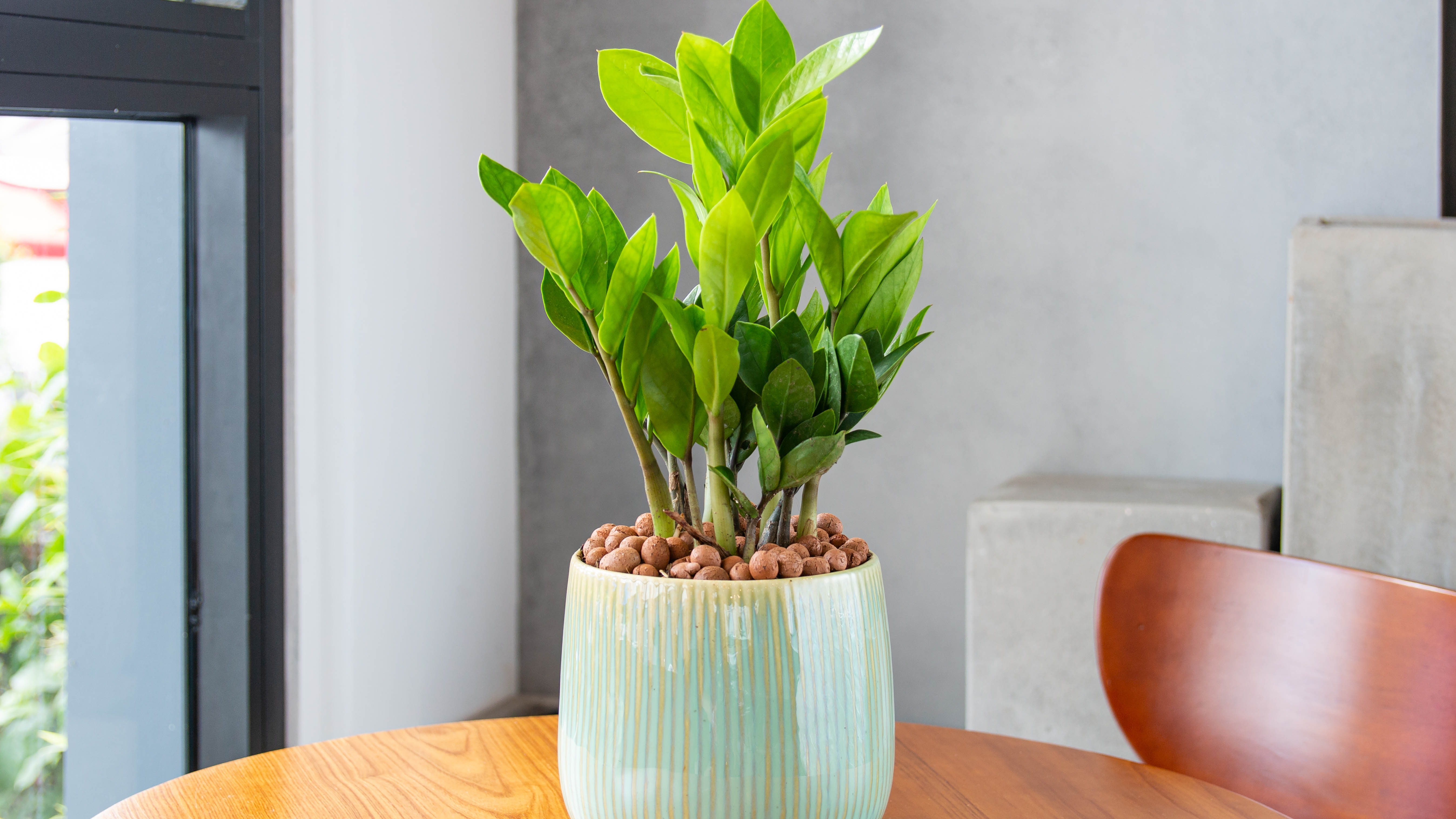
With its tall, glossy slender leaves and distinct zig-zag edges, the ZZ (Zamioculcas Zamiifolia) plant looks great on any kitchen windowsill. Known to be drought-tolerant and will happily thrive in shady spots or indirect light, this makes it ideal for kitchens with a lack of windows or low light.
What’s more, you only need to water the hardy, ZZ plant every 2-3 weeks, allowing the soil to dry out between waterings. Although, increase the water in brighter light and less often in lower light to help it thrive. In addition, it doesn't need regular repotting, which is convenient and low maintenance.
More from Tom's Guide

As the Homes Content Editor, Cynthia Lawrence covers all things homes, interior decorating, and garden-related. She has a wealth of editorial experience testing the latest, ‘must-have’ home appliances, writing buying guides and the handy ‘how to’ features.
Her work has been published in various titles including, T3, Top Ten Reviews, Ideal Home, Real Homes, Livingetc. and House Beautiful, amongst many.
With a rather unhealthy obsession for all things homes and interiors, she also has an interior design blog for style inspiration and savvy storage solutions (get rid of that clutter!). When she’s not testing cool products, she’ll be searching online for more decor ideas to spruce up her family home or looking for a great bargain!
